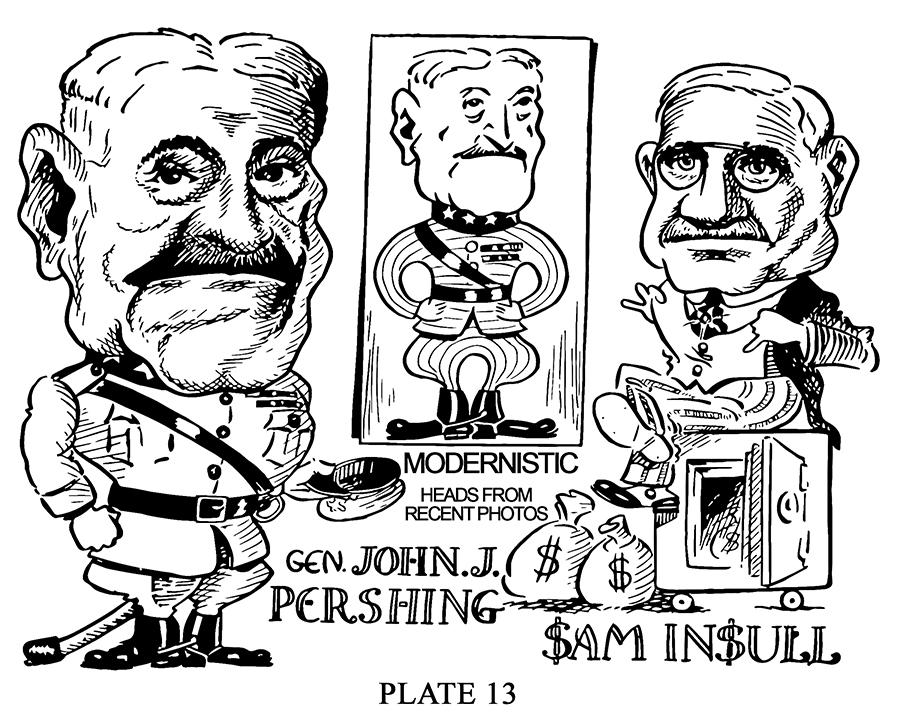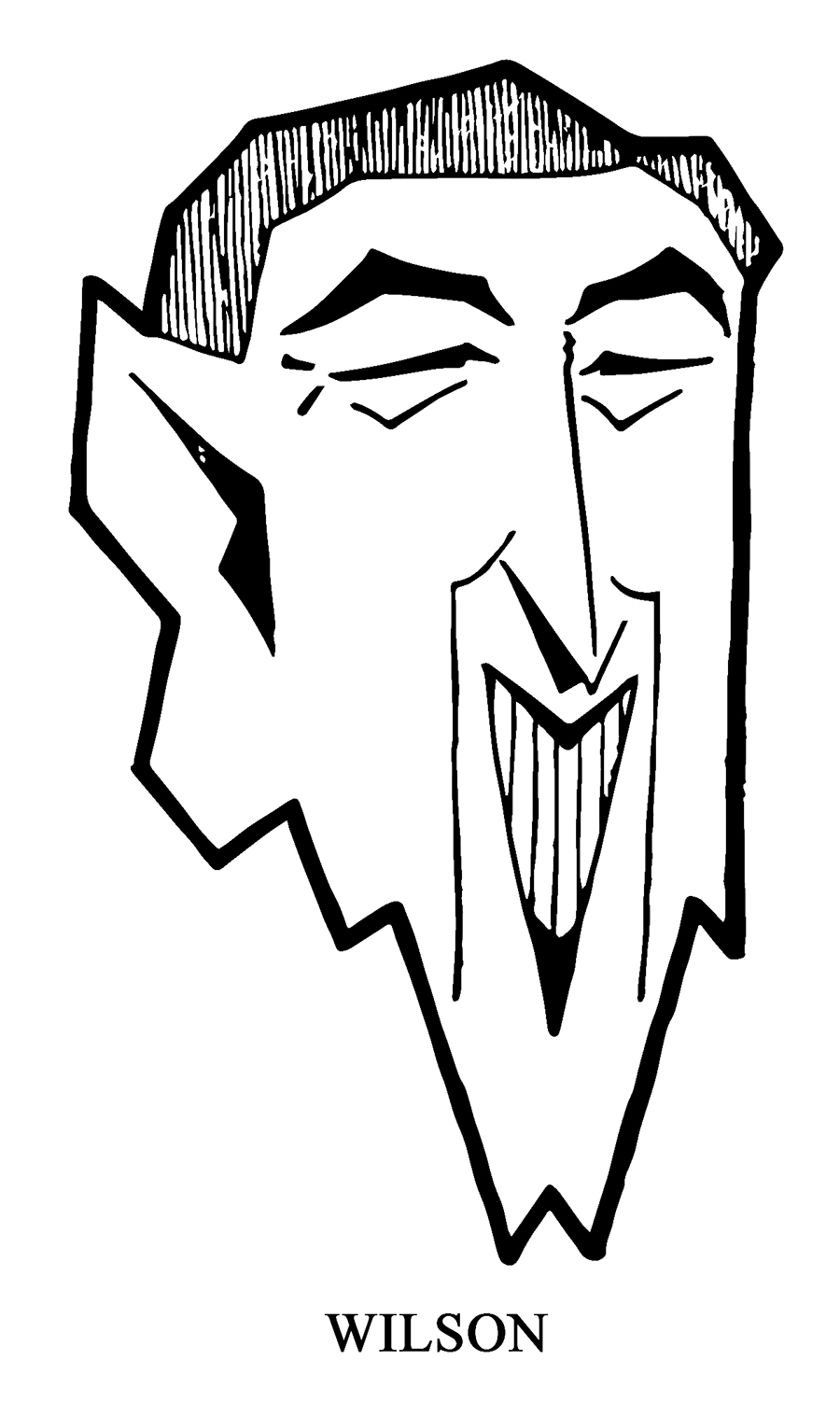 Shading is employed to put tone and life into cartoons. In shading the artist must take into consideration the purpose of the cartoon, and the proper technique to be used in the cartoon. When it is consistent with the technique and purpose of the cartoon, it is advisable to employ a variety of shading. For example, say the coat should be solid black, the trousers striped, and the vest shaded with parallel lines.
Shading is employed to put tone and life into cartoons. In shading the artist must take into consideration the purpose of the cartoon, and the proper technique to be used in the cartoon. When it is consistent with the technique and purpose of the cartoon, it is advisable to employ a variety of shading. For example, say the coat should be solid black, the trousers striped, and the vest shaded with parallel lines.
The different methods of shading are, solid black, stripes, cross hatch, plaids, dots, checks, and stipple or spatter. Plates 9, 11 and 12 illustrate these various styles of shading. Suitable shading gives a cartoon a professional appearance. Lettering pens or a small brush are used for making large stripes or for solid black areas. Sometimes stripes are not drawn solid black, but are only shaded with a fine pen. Figure 1, Plate 11 is an example. Figure 2 illustrates checks and Fig. 3, plaid and wriggly stripes. In Figure 4 note how the socks are drawn. There is no outline of the white parts. Note also how the white spats are drawn on Plate 12. Also how the shoes and hats are drawn, shaded, and highlighted.
Shading helps to express character, A cartoon of a tramp would naturally be shaded quite differently from one of a rich man; and a cartoon of a cowboy would be shaded differently from either the rich man or the tramp; due to the different type, style, color, weave, and material of the clothing.
Shadows are also very important in drawing cartoons and caricatures. On the various plates in this book note how the cartoonist has handled the shadows. The caricatures on Plate 7 are good examples of shadows on the head. Your attention is called to the shadows under eyebrows, under upper eyelids, at wrinkles, under nose, mustache and chin; and in the completed full figure caricature at the right, the shadow under the coat on the trousers. These shadows aid in giving the drawings depth or perspective, by causing the features to stand out more prominently.
In the drawings on Plates 11 and 12 are other applications of shadows. They appear under the collar, lapels, buttons, pocket flaps, vest coat tails, belts, trouser bottoms, and under the spats on the shoes, and under the shoes. Shadows under the shoes aid in making the feet appear in contact with the ground. The right foot of the football player, Figure 5, Plate 11, would appear on the ground if an appropriately drawn shadow was drawn just back of the toe. As it is, both feet are off the ground.
Just as shadows are used to make the feet contact the ground, so are they used to show that they are off the ground. Figure I on Plate 12 illustrates this point. Notice that these cross hatch lines are drawn so that the shadow seems to be lying flat on the ground. If the shading lines were drawn vertically and horizontally they would not make a satisfactory shadow. With the lines drawn vertically and horizontally the shadow would not appear flat on the ground, but would appear as if in the air, resting on its edge. Now if there was a house or board fence directly back of this figure, and in a line parallel with the direction this man is running, on which his shadow was cast, then the shadow would be drawn with vertical and horizontal lines. In that case the shadow would have the approximate shape of this figure in silhouette.
Shadows that are not in perspective should conform to the shape of the object from which the shadow is cast. In Figure 3 on Plate 10, notice that the black shadow under the crows nest follows the curvature of the mast. The line shading on the mast, crows nest, and telescope also bring out the surface direction, or curvature of the surface on which the shadows fall. Curved strokes are essential in representing rounded objects, and straight lines in representing plane surfaces. Surface direction is represented by lines drawn in the same general direction as the surface direction.
The same direction of light and shadow should be maintained throughout a composition. That is, if one object in the composition is lighted from the East with the shadow cast Westward, all other objects in the same composition should be lighted and shaded accordingly from the same direction. This is an error often made by beginners. Although absolute accuracy is not necessary in cartoons as it is in the more serious arts, gross incongruities will ruin an otherwise good cartoon. Therefore, the beginner should watch carefully for such errors and correct them.




